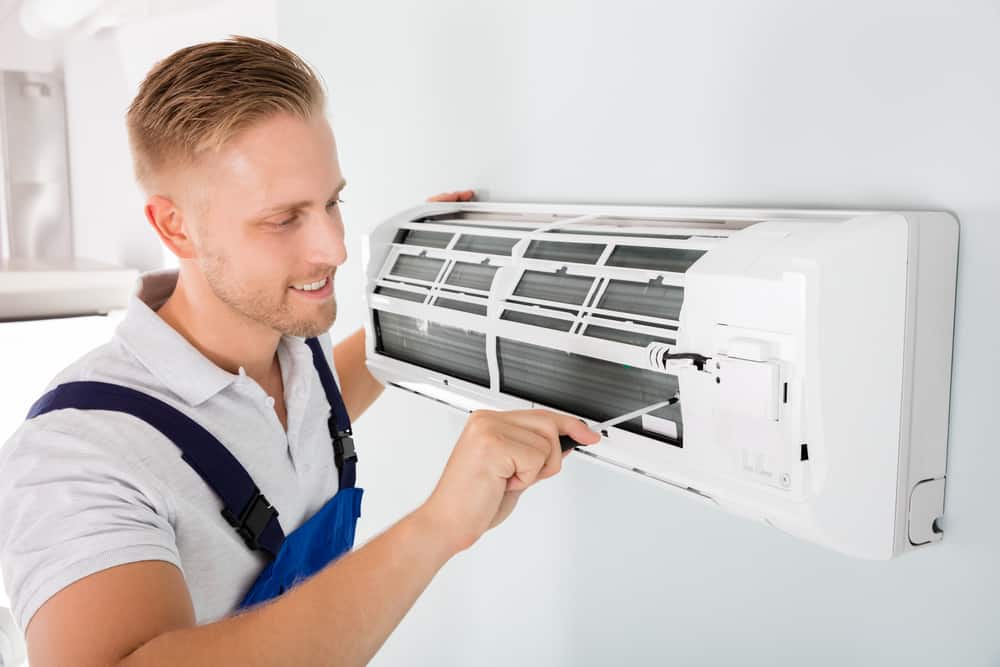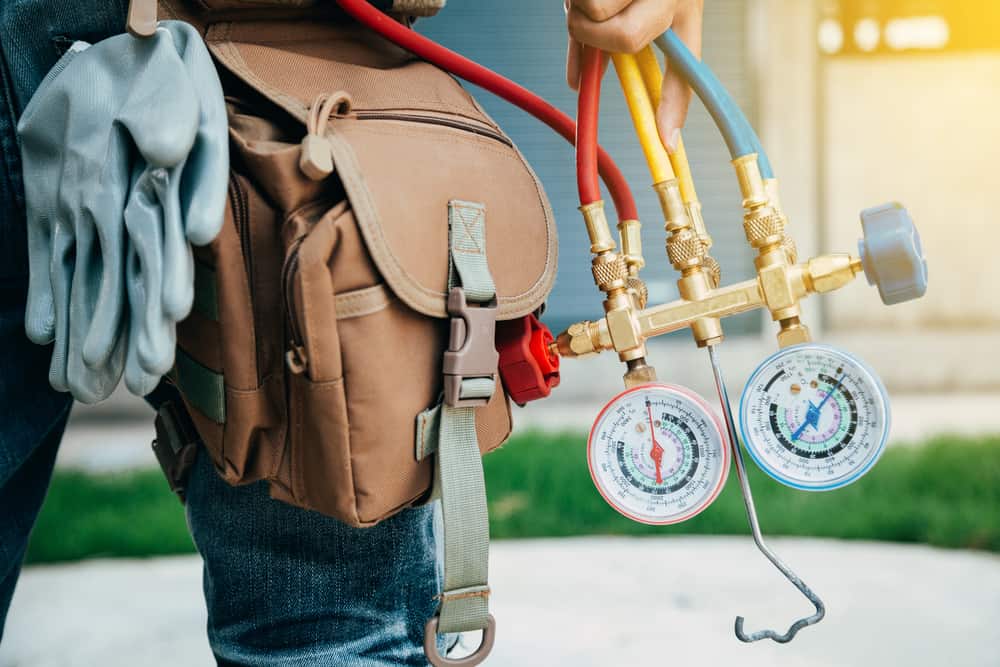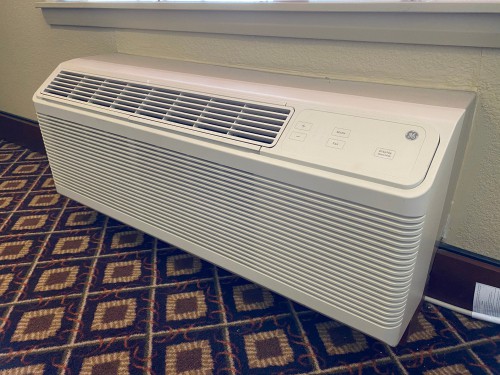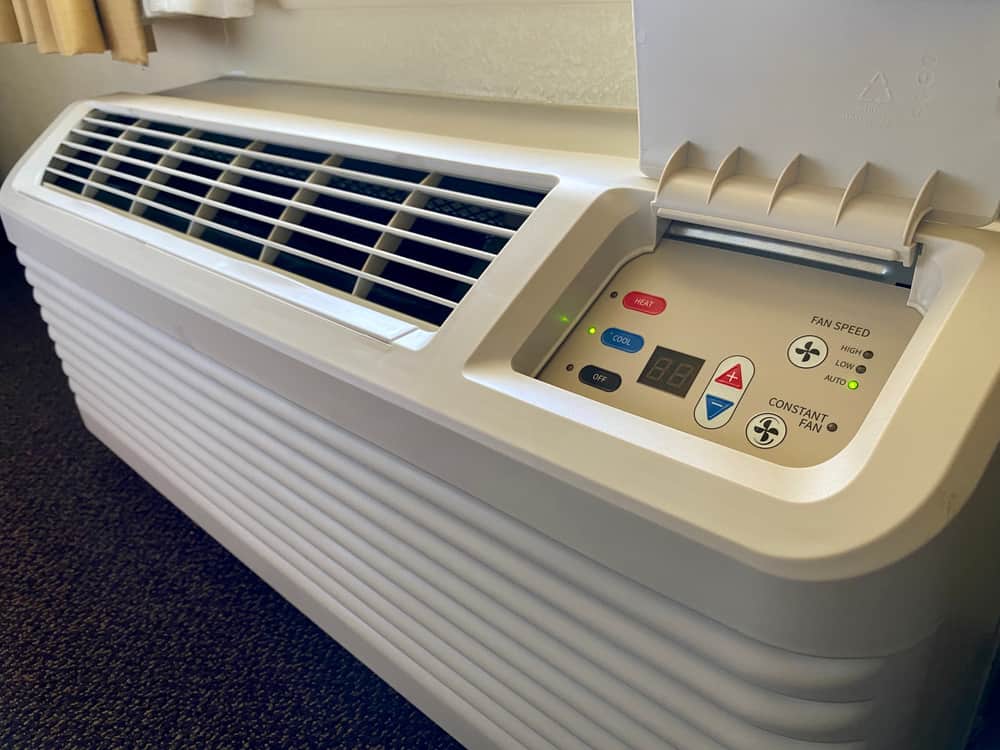Summary:
How Small PTAC Problems Become Expensive Disasters
Studies from the U.S. Department of Energy show that something as simple as a clogged filter can raise cooling costs by 15 percent. That’s money literally disappearing from your budget every month. But the real damage happens when you ignore the warning signs completely.
Maybe it’s not impacting the function of the AC today, but if you ignore it, it could lead to bigger and more expensive problems in the future. A rattling sound might seem harmless, but it often signals loose components that will eventually damage other parts. Ignored water leaks invite mold, and strange noises often warn that a fan motor is about to fail, with replacing a 9,000 BTU PTAC motor costing more than an annual maintenance plan.
The Compressor Failure Trap That Costs Thousands
Here’s where delayed maintenance gets really expensive. The compressor is often the toughest part of your PTAC unit and should last the full lifespan unless damaged or poor maintenance affects its performance, but compressor issues can cause problems from improper temperatures and restricted airflow to loud noises and refrigerant leaks.
When you ignore early warning signs like weak cooling or unusual cycling, you’re putting extra stress on the compressor. If the compressor’s gone bad, you’re looking at a repair that costs as much as a new unit, and if your system’s older, it’s likely running outdated refrigerant anyway. What could have been a $300 repair for a faulty thermostat or clogged drain becomes a $3,000+ replacement job.
The worst part? While minor fixes can be relatively inexpensive, major component replacements, such as circuit board failures or compressor malfunctions, can significantly increase costs. Property managers in NYC, Queens know this pain well. You budget for routine maintenance, but compressor failure hits like a financial sledgehammer.
If your PTAC is a regular in your maintenance logs—think 2–3 repairs in the past year—it’s time for replacement, as band-aiding problems over and over adds up quick. Don’t let your unit become that money pit that keeps demanding attention every few months.
Water Damage: The Hidden Cost That Keeps Growing
That small puddle under your PTAC unit isn’t just annoying—it’s expensive. Even if the AC seems to be working properly, leaks require immediate attention because they can cause water damage to your walls and floors, water damage to the unit itself, electrical safety issues, and create a moist, humid environment that encourages mold growth.
Leaks around the sleeve or clogged drains can cause hidden water damage, and if your wall’s getting soggy, save yourself the future mold bill and start fresh. We’ve seen property owners in Queens face thousands in remediation costs because they ignored a “minor” leak for months.
The cascade effect is brutal. Water damages the wall structure, creates mold problems, potentially affects neighboring units, and can even cause electrical hazards. Black mold growth inside the unit is a serious health concern that needs immediate professional remediation. What starts as a $150 drain cleaning becomes a multi-thousand dollar restoration project.
Here’s what makes it worse: insurance companies often don’t cover damage from “gradual leaks” that you should have addressed. They expect property owners to handle routine maintenance issues before they become disasters. That small leak you’re ignoring? You’re essentially self-insuring a much larger problem.
When Delaying PTAC Repair Costs More Than Replacement
Our Rule of Thumb: If the repair costs less than 30% of the price of a new unit and this is your first issue, fix it. But when you delay repairs, you often cross that threshold without realizing it. When repair costs exceed 50% of the price of a new unit, we recommend replacing it.
The math gets ugly fast. Emergency service calls cost more. Parts become harder to find for older units. In early March, 2014, McQuay formally announced it was discontinuing their legacy PTAC product lines, forcing specialists to quickly find replacement units. When manufacturers discontinue models, parts prices skyrocket and availability becomes unpredictable.
Emergency Service Premiums That Hurt Your Budget
Nothing costs more than emergency PTAC repair in NYC, Queens. When your unit fails during a heat wave or cold snap, you’re at the mercy of emergency service rates. We’re talking 2-3x normal pricing, plus the pressure to approve expensive repairs just to get your tenants or guests comfortable again.
There are PTAC companies operating in Manhattan, NY who would charge you unbelievable amounts of money (anywhere from $400 to $800) for this little issue that can be fixed on-site for a very reasonable price, as you end up spending a lot of money with these companies who take advantage of your situation because of winter time.
The timing is never convenient. Your PTAC doesn’t care that it’s a weekend or holiday. Emergency calls during peak seasons mean you’re paying premium rates when you can least afford it. Regular maintenance prevents most emergency situations, but once you’re in crisis mode, your negotiating power disappears.
Property managers know this trap well. The tenant complaints start flooding in, you need immediate relief, and suddenly you’re approving a $1,200 repair that could have been a $200 preventive fix three months ago. Regular maintenance and prompt repairs ensure the unit functions optimally and prevent costly emergency breakdowns.
The True Cost of Tenant Turnover and Lost Revenue
Here’s the hidden cost nobody talks about: what delayed PTAC repair does to your occupancy rates and tenant satisfaction. Uncomfortable tenants don’t renew leases. Hotel guests leave bad reviews. Commercial tenants start looking for better-maintained buildings.
Higher operational costs from a malfunctioning unit consuming more energy, reduced lifespan from continuous operation without addressing issues, and compromised air quality from a faulty unit not filtering air effectively all impact your property’s reputation and profitability.
The ripple effects compound quickly. One broken PTAC unit in a hotel can generate multiple negative reviews, affecting bookings for months. In residential properties, word spreads fast about maintenance issues. PTAC units typically last 7-10 years with proper maintenance, but frequent breakdowns, reduced cooling or heating capacity, and increased energy bills from older models struggling to maintain consistent temperatures signal it’s time for action.
Lost revenue from vacant units, increased marketing costs to attract new tenants, and the reputation damage from being known as the building with climate control problems—these costs dwarf the price of proper PTAC maintenance. Smart property owners in NYC, Queens understand that reliable HVAC isn’t just about comfort; it’s about protecting their investment and cash flow.
Take Action Before Small Problems Become Big Expenses
The pattern is always the same: ignore the warning signs, hope the problem goes away, then face a much larger bill when the system finally fails completely. Addressing problems early not only minimizes expenses but also extends the lifespan of the PTAC unit, as regular maintenance and prompt repairs ensure optimal function and prevent costly emergency breakdowns.
Regular maintenance, including preventative maintenance, and prompt problem-solving are crucial for keeping PTAC units running efficiently, with proper upkeep leading to energy savings and extending the lifespan of these important heating and cooling systems. The math is simple: spend a little now or spend a lot later.
If you’re dealing with PTAC issues in NYC, Queens, don’t wait for the problem to solve itself. Contact us at Lion-Air Enterprises for honest assessment and cost-effective solutions that protect your property investment and keep your tenants comfortable year-round.




